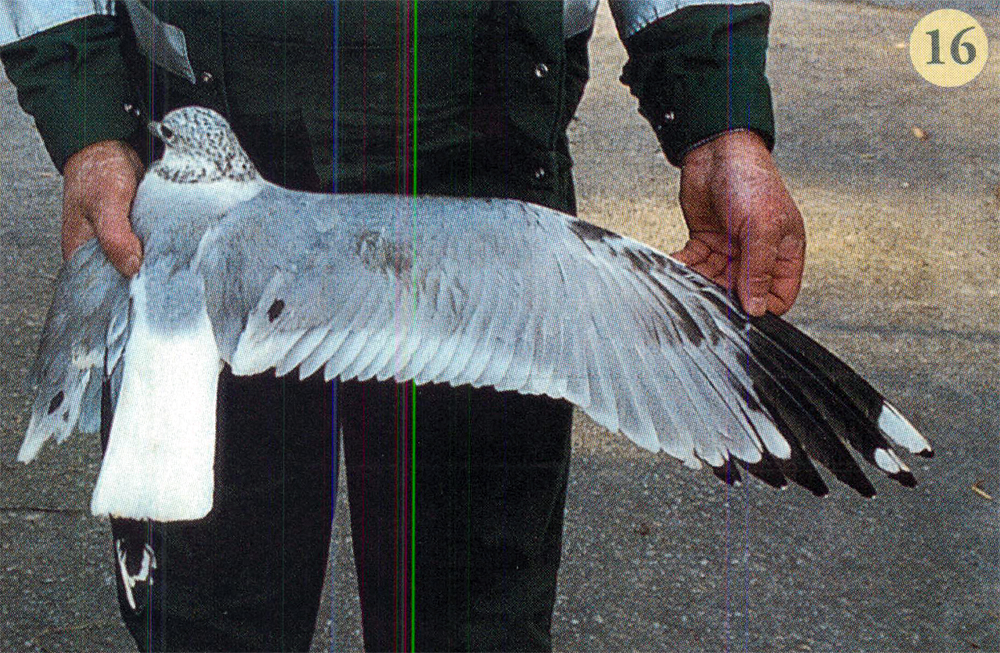 Mew Gull Larus canus canus; heinei; kamtschatschensis; brachyrhynchus
Mew Gull Larus canus canus; heinei; kamtschatschensis; brachyrhynchus
(last update: March 12, 2012)
Mew Gull canus SVS 7158737 3cy, 25 January 1998, Malmö, Sweden.
Figure 16: 7158737 (370/96,3) typical two-year old male (3CY) canus, with black markings on tertials. 25 January 1998.
The “average” two-year old bird (see fig 13) has white tail-feathers, 7 to 8 primaries showing black, one large and one small mirror, black markings on the primary coverts, black on the alula and black tip on P7-P9 (particularly P8-P9) without white tips. The absence of a white tip on P8 is believed to be an important character to separate well-developed second-year birds from retarded third-year old birds. On 91 second-year birds we only found three birds showing a white tip on P8, while 16 out of 18 three-year old birds had a white tip on P8. The white tip on P9 is more frequently lacking in second-year birds (only one out of 91 birds had this white tip), but unfortunately the white tip is also often missing in older birds.
Out of 138 second-year birds, 24 (17 %) had vestiges of black on the tail. Probably this is more usual among heinei than on canus. All 151 second-year birds had a mirror on P10, while 129 (85 %) birds had also a mirror on P9. Hence, only 22 birds (15 %) had only one mirror; none had no or three mirrors. Normally second-year birds have 7 primaries showing black, but we found a large range, spanning from six to all ten primaries black-marked.
Fig 16 (below) shows well-developed second-year bird with a tendency to white tips on P7-P9 (small, but present). This bird also has black on the tertials, which is seldom seen.
Figure from:
Is it possible to age subadult Mew Gulls Larus canus?
by: Kenneth Bengtsson & Lennarth Blomquist, publication in: Anser 2-42(2003): p 73-92.
